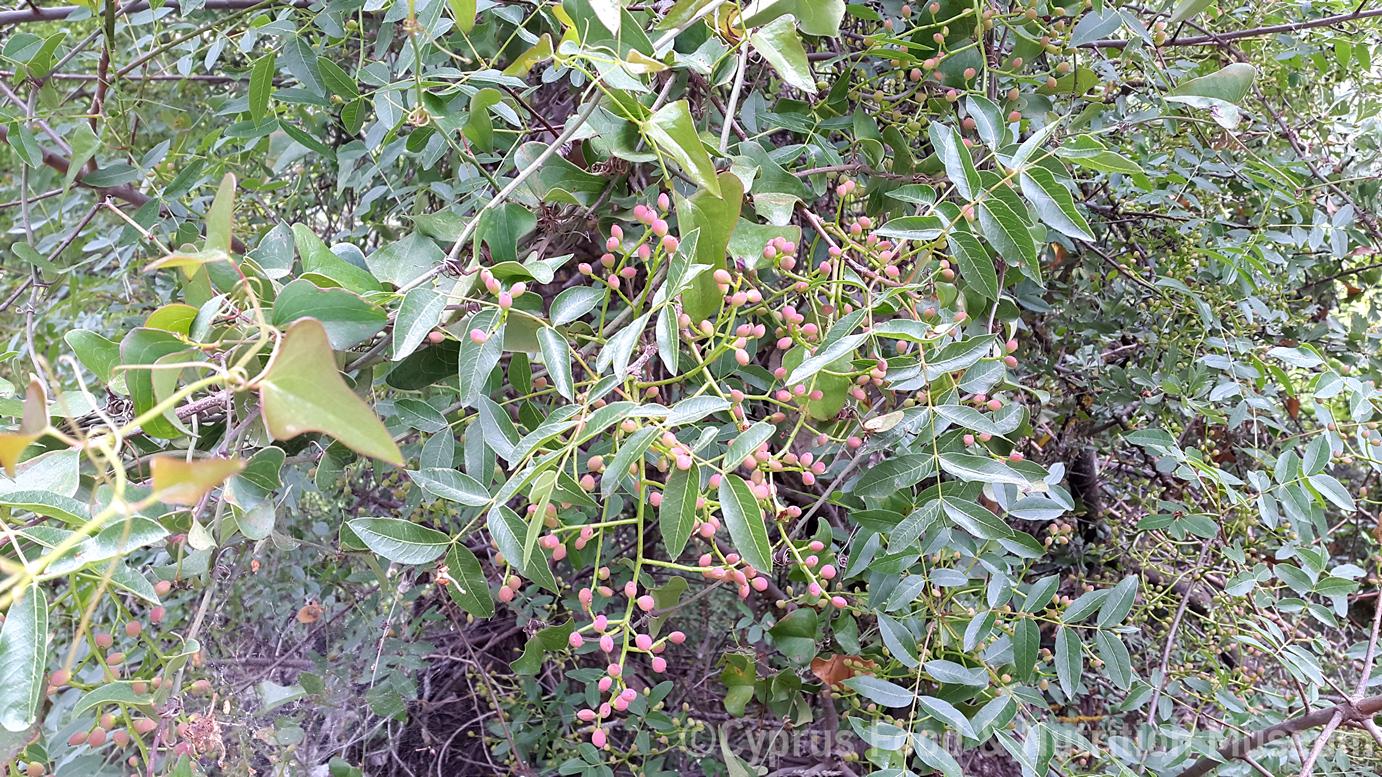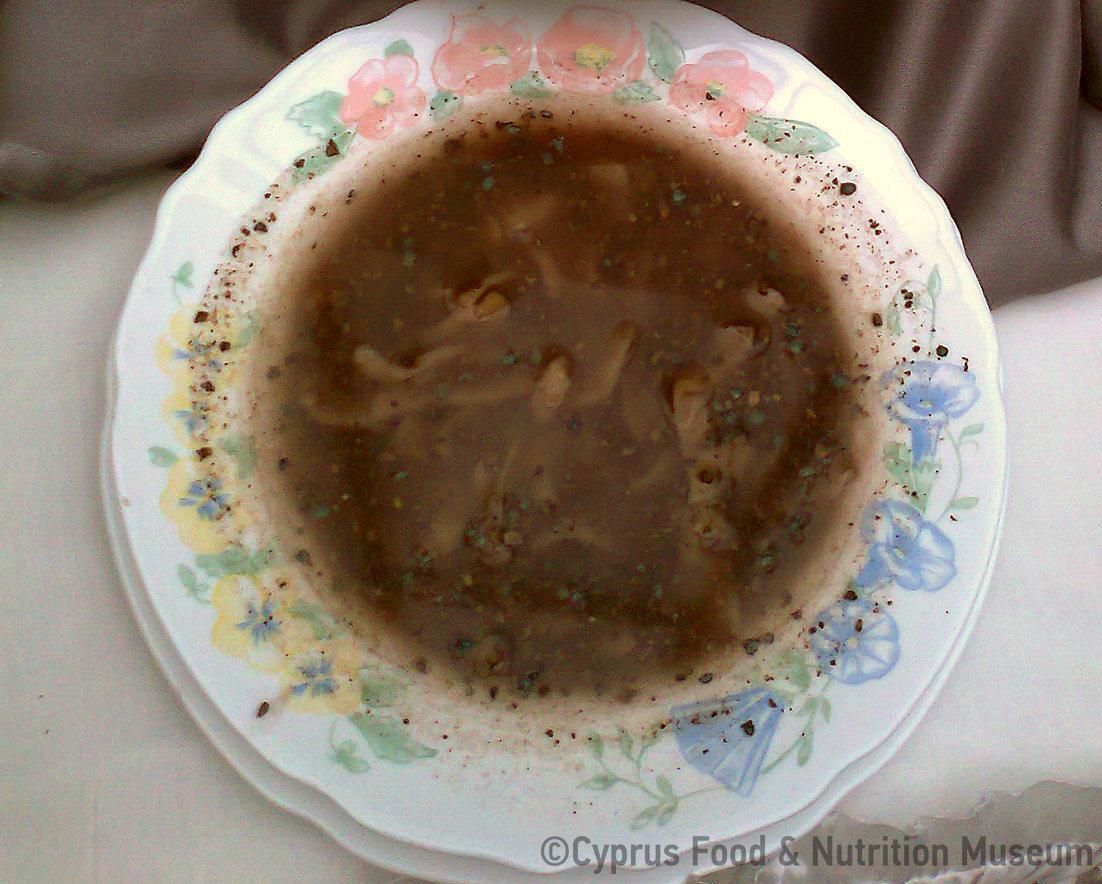Paphitiki pissa (or tremithopissa) is made from resin of the tremythia tree (Pistacia terebinthus or Pistacia atlantica, subsp. Cypricola).
Name - Origin
Pissa Paphitiki (or tremithópissa) is made from resin of the tremithia tree (Pistacia terebinthus or Pistacia atlantica, subsp. Cypricola). It is hard with a strong characteristic resin taste.
See: Tremithopissa (Pahitiki pissa) in the Food section.
Resin is collected from the grooves of the trunk of the terebinth tree, it is filtered very slowly (1-2 days) through a sprig of thyme and finally the dark coloured 'tremintina' is collected, which is similar to mastic. Tremintina is collected by workers and placed in special containers. It is pale yellow and viscous, but once it is cleaned and boiled in a cauldron (or in a cooking pot if the quantity is smaller) over a slow fire, where it is constantly stirred, it releases a large quantity of essential oil, it liquefies and turns into a milky colour. It is then srained using a suitable piece of cloth in a wooden tub containing a large amount of water. It is then moulded for some time until its colour turns from pale yellow to white. The water is constantly refreshed so that it is always cold. During this process, tremintina gradually becomes white in colour and more elastic. It is left to cool and then it is cut into small, uniform pieces and wrapped in greaseproof paper. The famous and sought-after 'paphitiki pissa' is now ready (Hadjikosti M. (2008), pp. 306-307).
Functional and symbolic role
It was used in cleaning the teeth and as a flavouring in various sweets. Note: Stalo Lazarou
Additional information and bibliography
For more than half a century, the delicious and very good quality "Paphitiki pissa", is produced in Geroskipou, in Paphos district, where local craftsmen still follow, to a great extend, the traditional method of production. Its production began in 1950 and the raw material used for its manufacture was trimithine, collected from the terebinth trees of Geroskipou, Tala and the Monastery of Agios Neophytos.
The midwife would rub the new mother with various herbs and perfumes. One of them was gum which she mixed with ginger and cinnamon. It was important for the recovery of the new mother to be over the boiling water with herbs. The midwife would pour gum on the stones or tiles to get more steam out and into the boiling water.
When the baby' had a tummy ache, they would rub it with gum oil, which was soothing. Infertility was a problem and a curse for the family and especially for the woman. Suppositories were used as one of the remedies; they would use cotton wool or cocoons along with oli and gum. (Protopapa K, 2009, pp. 233, 245-246, 526, 574-575)
Hadjikosti, M. (2008) Γεροσκήπου, Από την αρχαιότητα μέχρι σήμερα, Geroskipou Municipality, Cyprus.
Protopapa K. (2009), Τα έθιμα της γέννησης στην παραδοσιακή κοινωνία της Κύπρου, Publications of the Centre for Scientific Research, XLIX, Nicosia.
Stalo Lazarou, Varvara Yangou, Demetra Zannetou


